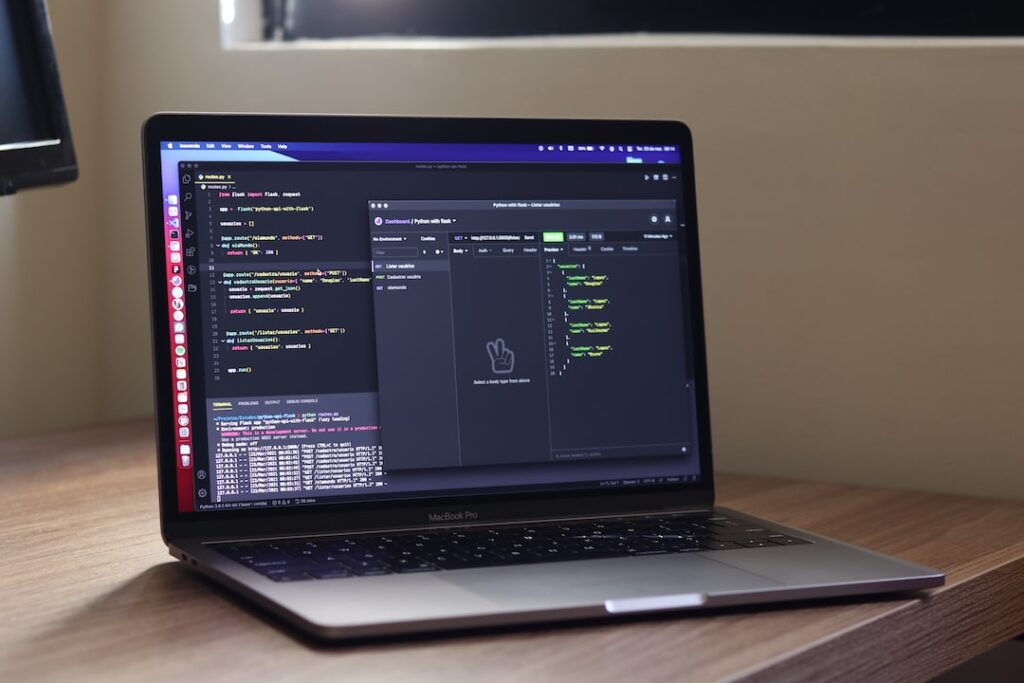The Importance of GPU Clusters for Cloud Security

Organizations are faced with the critical challenge of safeguarding their sensitive data and systems. As cyber attacks become more sophisticated, the need for robust security measures has never been greater. One solution that is gaining traction is investing in a GPU cluster for cloud security. GPU clusters, powered by the parallel processing capabilities of graphics processing units, offer unparalleled speed and efficiency in handling complex encryption algorithms and threat detection mechanisms. This enables organizations to enhance their cybersecurity posture by rapidly identifying and mitigating potential risks. Furthermore, GPU clusters provide the scalability required to adapt to the dynamic nature of cyber threats, ensuring that organizations can effectively protect their assets in the cloud environment. By investing in a GPU cluster for cloud security, organizations can proactively strengthen their defenses, mitigate security risks, and uphold the trust of their stakeholders in an increasingly interconnected world.
Enhancing Cloud Security with GPU Clusters
Where data breaches and cyber threats are becoming increasingly common, ensuring robust cloud security is paramount for businesses of all sizes. One innovative solution that is gaining traction in the realm of cybersecurity is the use of GPU clusters to bolster cloud security measures. Let’s delve into how leveraging GPU power can enhance cloud security on multiple fronts:.
Utilizing GPU Power for Encryption
With the growing complexity of cyber threats, encryption plays a crucial role in safeguarding sensitive data. GPU clusters offer immense parallel processing capabilities, making them ideal for accelerating encryption processes. By harnessing the power of GPUs, organizations can encrypt and decrypt data swiftly and efficiently, enhancing overall data security.
Real-time Threat Detection
Traditional threat detection methods often struggle to keep pace with the evolving threat landscape. GPU clusters, with their high computational power, enable real-time threat detection by quickly analyzing vast amounts of data for potential security risks. This proactive approach allows organizations to detect and respond to security threats promptly, minimizing the impact of cyber attacks.
Scalability and Performance Benefits
Scalability is a key consideration in cloud security, especially for growing businesses. GPU clusters provide scalable security solutions that can adapt to the changing needs of an organization. Additionally, the parallel processing capabilities of GPUs result in improved performance, allowing for faster data processing and analysis. This not only enhances security measures but also boosts overall system performance.
Enhanced Data Privacy and Compliance
GPU clusters not only enhance encryption processes but also contribute to improved data privacy and regulatory compliance. By efficiently handling encryption tasks, GPU clusters help organizations maintain data integrity and confidentiality, ensuring compliance with data protection regulations such as GDPR and HIPAA.
Mitigating Insider Threats
In addition to external threats, insider threats pose a significant risk to data security. GPU clusters can aid in identifying anomalous behavior patterns within the network, enabling early detection of potential insider threats. By analyzing user activities and network traffic in real-time, organizations can proactively prevent data breaches caused by malicious insiders.
Advanced Machine Learning Capabilities
The integration of GPU clusters with machine learning algorithms enhances cloud security by enabling predictive threat modeling and anomaly detection. By leveraging GPU-accelerated machine learning, organizations can identify emerging threats, predict potential security breaches, and automate response mechanisms, thereby strengthening their security posture.
The integration of GPU clusters in cloud security strategies offers a proactive and efficient approach to safeguarding sensitive data and mitigating cyber threats. By leveraging GPU power for encryption, real-time threat detection, scalability, performance benefits, enhanced data privacy and compliance, mitigating insider threats, and advanced machine learning capabilities, organizations can significantly enhance their cloud security posture and stay a step ahead in the cybersecurity landscape.
Cost-Effectiveness and Efficiency of GPU Clusters
The utilization of GPU clusters has gained significant traction across various industries owing to their immense computational power and parallel processing capabilities. This blog section will delve deeper into the cost-effectiveness and efficiency of GPU clusters, focusing on their comparative cost analysis, operational efficiency gains, scalability, and flexibility.
Comparative Cost Analysis: Understanding the Financial Benefits
When considering the implementation of GPU clusters, conducting a comprehensive comparative cost analysis is crucial. While the initial investment in GPU clusters may seem higher than traditional computing setups, the long-term cost savings can be substantial. Factors such as hardware costs, energy consumption, maintenance expenses, and software licensing need to be evaluated to determine the overall cost-effectiveness of GPU clusters. Additionally, exploring the total cost of ownership over the projected lifespan of GPU clusters can provide a clearer picture of their financial advantages.
Operational Efficiency Gains: Enhancing Performance and Productivity
Apart from financial considerations, the operational efficiency gains derived from GPU clusters play a vital role in their widespread adoption. GPU clusters excel in processing complex computations and handling massive datasets, making them indispensable for tasks like machine learning, data analytics, scientific simulations, and more. The parallel processing capabilities of GPU clusters result in faster processing times, improved performance, and heightened productivity, providing organizations with significant efficiency gains.
Scalability and Flexibility: Adapting to Dynamic Workloads
Scalability and flexibility are key attributes that contribute to the appeal of GPU clusters. Organizations can easily scale GPU clusters to meet changing computational demands, ensuring optimal resource utilization and performance efficiency. The flexibility of GPU clusters allows businesses to seamlessly adjust to dynamic workloads and evolving technological requirements, enhancing their competitive edge in the data-driven marketplace.
Environmental Considerations: Sustainability and Energy Efficiency
In addition to cost-effectiveness and operational efficiency, GPU clusters also offer environmental benefits. Compared to traditional computing setups, GPU clusters can deliver higher performance per watt, leading to lower energy consumption and reduced carbon footprint. By leveraging GPU clusters, organizations can contribute to sustainability efforts while maximizing computational capabilities.
The cost-effectiveness, operational efficiency, scalability, flexibility, and environmental advantages of GPU clusters make them indispensable tools for organizations aiming to bolster their computational capabilities and stay competitive in today’s data-centric landscape.
Challenges and Considerations
Integration with Existing Infrastructure
When embarking on the journey of integrating new technology solutions, organizations often face significant challenges in harmonizing them with their existing infrastructure. This process entails meticulous attention to detail to address compatibility issues, data migration concerns, and ensuring a smooth and efficient operation that seamlessly bridges the gap between the new and old systems. Failure to integrate effectively can lead to disruptions in business operations, data loss, and increased operational costs.
Training and Skill Requirements
In addition to integration challenges, organizations need to consider the training and skill requirements associated with implementing new technology. It is crucial to recognize that technology is only as effective as the people using it. Therefore, investing in comprehensive training programs for employees becomes imperative to ensure the successful adoption and utilization of the new system. Moreover, there may be a need to recruit individuals with specialized skill sets to manage and maintain the technology infrastructure. By proactively addressing the training and skill requirements, organizations can enhance operational efficiency, reduce the risk of errors, and empower their workforce to leverage the full potential of the new technology.
Scalability and Future-Proofing
Beyond the immediate challenges of integration and training, organizations must also consider the scalability and future-proofing aspects of the new technology. Scalability is critical to accommodate growth and expansion, ensuring that the technology solution can adapt to evolving business needs and increasing demands. Future-proofing involves assessing the longevity and relevance of the technology in the rapidly changing digital landscape. By selecting solutions that are scalable and aligned with future trends, organizations can mitigate the risk of obsolescence and stay ahead of the competition.
Security and Compliance
Another crucial consideration is the security and compliance implications of implementing new technology. With the rising threat of cyberattacks and data breaches, ensuring robust security measures are in place to safeguard sensitive information is paramount. Moreover, organizations must adhere to regulatory requirements and industry standards to maintain data integrity and protect customer privacy. By prioritizing security and compliance from the outset, organizations can build trust with stakeholders, mitigate risks, and uphold their reputation in the market.
Case Studies and Success Stories
Organization A: A Paradigm Shift in Secure Cloud Migration
Unravel the captivating journey of Organization A as they embarked on a transformative voyage towards secure cloud migration. Navigating the turbulent waters of technological evolution, Organization A encountered formidable obstacles that necessitated groundbreaking solutions. By dissecting the challenges they encountered, the innovative strategies they employed, and the remarkable benefits they reaped from this migration, we glean profound insights into the transformative power of embracing cloud technology.
From the nascent stages of meticulous planning and seamless implementation to the final phases of optimization and beyond, we delve into the intricacies of their odyssey. The narrative of Organization A stands as a testament to the potential for substantial cost savings, enhanced security measures, and unmatched scalability that cloud migration offers to forward-thinking enterprises.
Organization B: Spearheading Real-time Threat Mitigation
Embark on an enthralling expedition through Organization B’s crusade against real-time threats in the ever-evolving landscape of cybersecurity risks. Through captivating scenarios and real-life illustrations, we shed light on the proactive measures and swift responses that empowered Organization B to identify and neutralize threats with unparalleled precision.
By peeling back the layers of their robust cybersecurity framework, we uncover the array of defense mechanisms that shielded their sensitive data and safeguarded the integrity of their operations. The saga of Organization B underscores the pivotal significance of vigilance, readiness, and adaptability in fortifying digital assets against the backdrop of today’s dynamic threat environment.
Delving Deeper: A Closer Look at the Impact
Beyond the surface narrative, let’s delve deeper into the tangible outcomes and intangible benefits experienced by both Organization A and Organization B. By examining the quantifiable metrics such as cost reductions, efficiency gains, and cybersecurity incident response times, we paint a comprehensive picture of the ripple effects generated by these strategic initiatives.
Moreover, we explore the ripple effects of these success stories on the industry at large, drawing parallels between these case studies and broader trends in cloud adoption and cybersecurity best practices. By contextualizing these narratives within the wider landscape of digital transformation, we extract valuable lessons and actionable insights for organizations navigating similar paths toward innovation and resilience.
Conclusion
Investing in a GPU cluster for cloud security is crucial for organizations looking to enhance their cybersecurity measures. The superior processing power and parallel computing capabilities of GPU clusters enable faster data encryption, real-time threat detection, and efficient analysis of large datasets, making them invaluable in safeguarding sensitive information stored on cloud platforms. By making this investment, organizations can bolster their defenses and stay ahead of cyber threats in an increasingly digital world.







